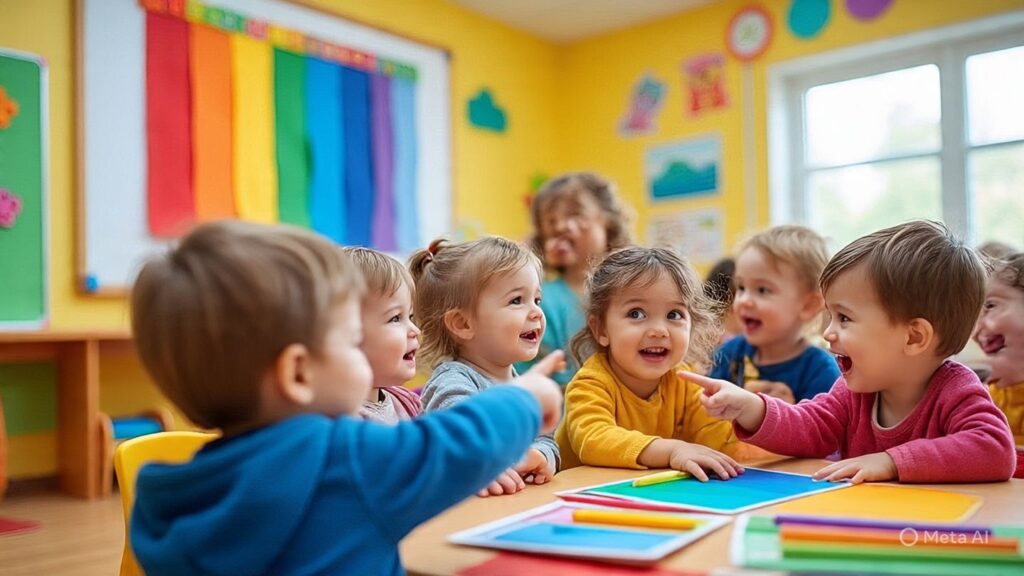Importance of Colors in Early Childhood Education
Color is one of the first concepts children begin to recognize and learn. From identifying red apples to drawing with crayons, colors are a constant in a child’s environment. Teaching colors in early childhood is far more than naming hues—it’s a foundational experience that contributes significantly to a child’s brain development, language acquisition, and emotional intelligence.
Cognitive Development
Learning colors supports cognitive development by encouraging children to classify, match, and differentiate objects. When a child learns that a banana is yellow or that the sky is blue, they begin to make associations and connections that help structure their understanding of the world. Color recognition also forms the basis for learning other concepts like shapes, numbers, and letters.
Language Skills
Colors are descriptive tools. When a child says “red ball” instead of just “ball,” they’re learning to express details and think descriptively. This enhances their vocabulary and communication skills. Parents and teachers can support this by asking questions like, “Which flower is red?” or “Can you find something green?”
Emotional Understanding
Colors are deeply tied to emotions. Children learn to associate colors with feelings, such as red for anger or love, and blue for sadness. This helps in expressing and understanding emotions. Using colorful emotion charts in classrooms can help children point to how they feel, even if they can’t yet articulate it with words.
Visual Discrimination and Memory
Recognizing colors enhances a child’s visual memory and attention to detail. These skills are essential for reading and writing, where children must distinguish letters and words that look similar. Games like matching colored objects or puzzles can strengthen these skills in a fun and engaging way.
Boosting Creativity
Colors inspire imagination. Whether finger-painting, coloring pictures, or designing crafts, working with different colors encourages children to express themselves creatively. Early exposure to a broad spectrum of colors can open doors to artistic exploration and appreciation.
Classroom Engagement
Bright and colorful classrooms tend to stimulate curiosity and excitement. Educators often use color-coded systems to help children understand rules and routines—like red for stop or green for go. These visual cues make learning more intuitive and engaging for young learners.
Practical Tips for Parents and Teachers
- Introduce one color at a time and associate it with familiar objects (e.g., green = grass).
- Use color-themed days or weeks (e.g., ‘Blue Day’ where everything from clothes to snacks follows the theme).
- Include color songs, books, and games in daily routines.
- Ask children to sort toys, blocks, or clothes by color.
- Encourage art activities that allow free play with paints and crayons.
Conclusion
Colors are not just beautiful to look at—they play a vital role in a child’s early development. By understanding the importance of colors, parents and educators can better structure learning environments that nurture intellectual growth, language skills, emotional expression, and creativity. Colorful experiences are rich learning experiences that help children thrive.
